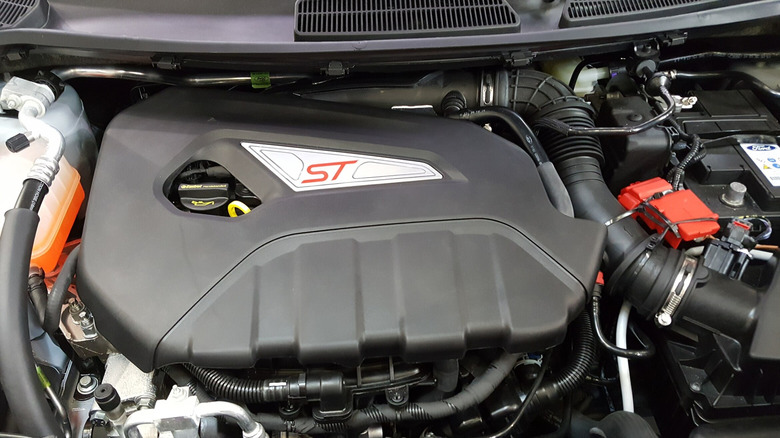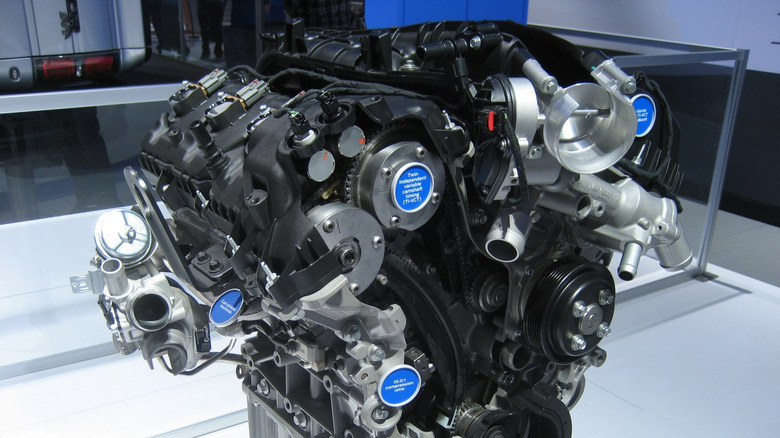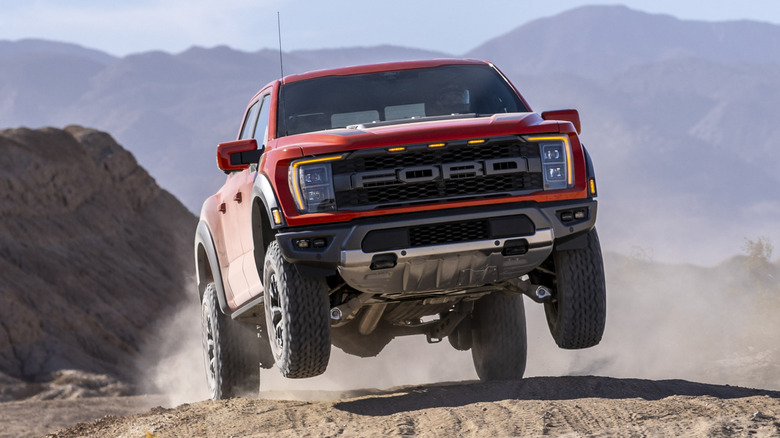What Exactly Does The EcoBoost Engine Do & Is It Just A Turbo?
It's every automaker's dream to develop a car that'll offer more power with less engine capacity — it's the same feeling the tuner world got around the mid-2010s when Teslas with Insane Mode started achieving ridiculous acceleration numbers. Sub-four second cars didn't feel unattainable after that. Ever since its introduction in 2008, Ford has featured its EcoБoost engine technology across all its platforms, from everyday cars like the Fiesta and Mondeo to full-blown trucks like the Ford F-150, and even high-performance applications like the Ford GT.
If you weren't too interested about the specifics of the big Blue Oval's EcoBoost technology, you'd simply brush it off as marketing flummery. Fortunately, Ford's EcoBoost technology is more than just a PR campaign. According to Ford, the EcoBoost technology in its engines means highly responsive driving, with low-end torque, and overall improved performance.
Simply put, it was dispelling the no replacement for displacement adage, bridging the gap between performance and efficiency. Ford's EcoBoost engine is special, and it's more than just a turbocharged engine. It combines turbocharging, direct fuel injection, and variable camshaft timing, delivering more power, torque, and fuel efficiency.
How Ford's EcoBoost works
The name says it all, Eco for economy, and Boost for power. Adding power to economy cars isn't new; if anything, it is what gave birth to tuner culture. For decades, performance enthusiasts have tinkered with smaller engines to offer thrilling performance, while still providing some of the benefits of fuel efficiency.
EcoBoost technology seems to have the right cocktail, adding direct fuel injection and variable camshaft timing to the mix, and the numbers don't lie. This technology combines three key components to improve performance and efficiency.
Turbocharging utilizes exhaust gases to spin the turbine, forcing more air into the engine cylinders. The extra air makes up for a more powerful combustion, enhancing engine power output and efficiency. Direct fuel injection, on the other hand, delivers pressurized fuel directly into the combustion chamber with precise control, ensuring the engine only makes use of the fuel it needs, which allows for high compression ratios and combustion efficiency.
Lastly, variable camshaft timing adjusts the opening and closing of intake and exhaust valves based on engine speed and load. This, in turn, optimizes fuel economy and increases low-end torque.
Real-world impact on Ford cars
Ford's EcoBoost lineup offers more than just turbocharging, direct injection, and variable camshaft timing — it also offers variety. Ford EcoBoost engines come in several different sizes, from the compact 1.0-liter three-cylinder in cars like the Fiesta and Mondeo, to more powerful 2.7-liter and 3.5-liter V6 configurations on trucks like the Ford F-150 and SUVs like the Bronco. This range makes EcoBoost technology available across different kinds of Fords.
For the longest time, big displacement meant more power, but Ford's EcoBoost over the years has delivered more power from a smaller displacement compared to its competitors. For instance, the most powerful 3.5-liter EcoBoost, which is in the Ford Raptor, puts out 450 hp, outperforming the RAM 1500 Rebel's 5.7-liter V8, which generates 395 hp. Not to forget, the GT Mk IV's twin-turbo EcoBoost V6 with 800 hp surpasses the standard Dodge Challenger Hellcat's 6.2-liter V8, which delivers 717 hp. Numbers don't lie.


